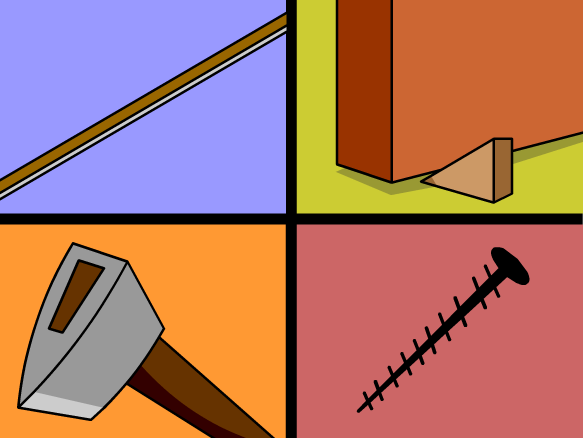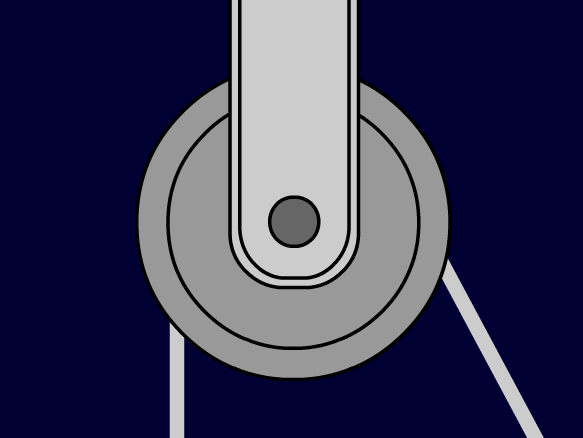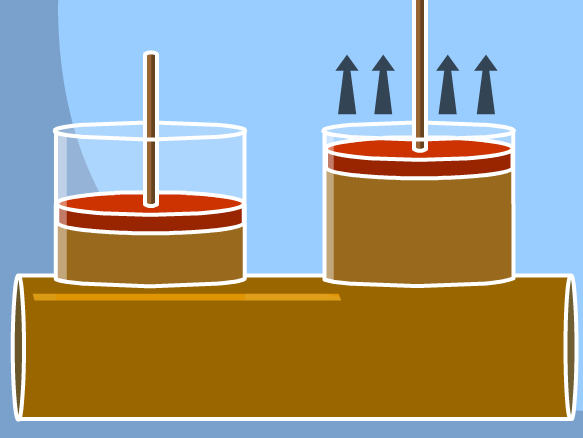Simple Machines
Simple machines are everywhere - they make modern life possible. We put EFFORT into them to move a LOAD. The quantification of the amount of EFFORT used to do a job is called the WORK DONE and is equal to the FORCE applied multiplied by the DISTANCE MOVED.
\[work\,done=force×distance\,moved\]
The ratio of the force out compared to the force put in is known as the MECHANICAL ADVANTAGE.
\[Mechanical\,advantage=\frac{force_{out}}{force_{in}}\]
If a machine produces more force than is put in, it is known as a FORCE MAGNIFIER.
If a machine moves the load a further distance than we put in, it is known as a DISTANCE MAGNIFIER.
The usual simple machines are:
\[work\,done=force×distance\,moved\]
The ratio of the force out compared to the force put in is known as the MECHANICAL ADVANTAGE.
\[Mechanical\,advantage=\frac{force_{out}}{force_{in}}\]
If a machine produces more force than is put in, it is known as a FORCE MAGNIFIER.
If a machine moves the load a further distance than we put in, it is known as a DISTANCE MAGNIFIER.
The usual simple machines are:
- Lever
- Wheel and axle
- Inclined Plane (often the screw and wedge are considered to be examples of this, sometimes they are treated separately)
- Gears
- Pulleys (known to sailors as block and tackle)
- Hydraulics
Your Task
Use Word or Google Docs to produce a report on Simple Machines. Max font size is 12 pt. The mark scheme is included below the links for reference. You are working independently. The report should include:
- General discussion on machines and why they are useful
- Sub-sections on at least 4 of the different types of simple machines with diagrams and pictures showing how they work and some applications of them. Try to use interesting examples that are relevant to your life or Bermuda as much as possible. (for example, consider the BELCO engines and/or DT) I have provided some links below for your reference, but you may look for others.
- You may include images from the web BUT you must include a) your OWN caption and b) your OWN labels.
- Print off for Tuesday 27 May.
Mark Scheme
- Name, date in the header (1) Be sure to use the word 'May' for month and not the number '5'
- Suitable title (1)
- Introduction (4) One mark for a very basic approach, up to four for science and detail of mechanical advantage and comparisons of effort in and effort out. Own words obviously!
- Each type of machine (4 each to a maximum of 16) Marks awarded for examples, description and how it works. One mark for more advanced science.
- Presentation (3) General marks for overall quality of presentation and work.
Resources
Wikipedia - Simple Machines
BrainPop Videos. Username: saltus17
BrainPop Videos. Username: saltus17
|
|
|
|





